#4
Spypoint G4 vs Covert CA3.0
It's been a little longer than expected to get this one out. Ran into a few hiccups. When I first checked these two cameras I had neglected to check the battery meter on the Covert. It was dead and only had 2 pics on it so I had to start over. Then I did a firmware update on the Spypoint and left for the IMTS show in Chicago for a few days. The firmware update apparently increased the power to the LED's and I had a lot of very white IR photos at night. I decided to move the cameras to separate trees with the Covert looking across the trail and the Spypoint looking more down the trail on a corner. I didn't get a ton of pics but I think there's enough to do a comparison.
First photo:
Spypoint at dusk:
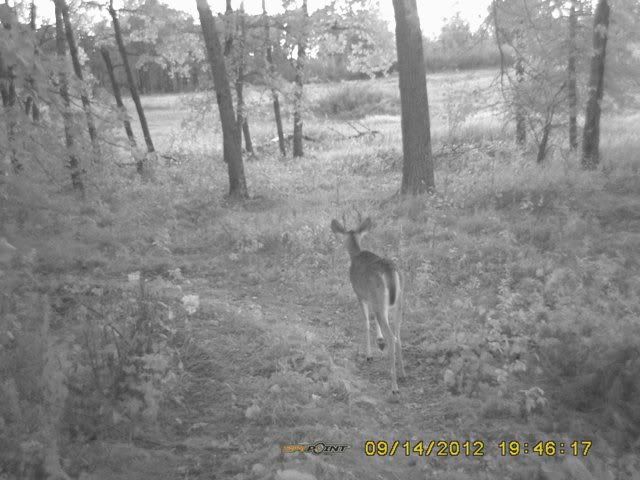
The firmware update I did was supposed to "improve picture quality" and it's hard to say as this pic still seems a little fuzzy. However, looking at some past photos from the camera there may be a slight improvement.
Covert at dusk:

I was a little surprised to see that the Covert does not turn the IR filter on as early as some other cameras. It's a tad blurry but it is nice to have color pics. On the flip side, if you look at the Spypoint photo above, you can make out a lot more detail when the IR filter is on at this time of day as it takes the shadows out of the equation. Also, the trigger time on this photo seemed a little slow on the Covert.
Spypoint night (moving subject)

Photo is a little blurry here and you can tell that the IR flash is brighter than before after the firmware update. That isn't necessarily a good thing as close up subjects with any white on them (like deer) will not show up as well. But for what it's worth, this is a decent IR pic.
Covert night (moving subject)

Little blurry here too but a decent IR photo compared to what's out there. It's really not any better or any worse than the same Spypoint photo above. Trigger time was better than on the first photo.
Spypoint night (still subject)
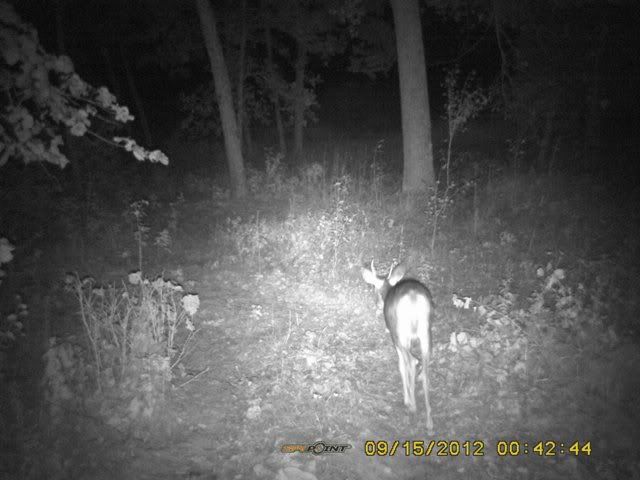
You can see what I'm referring to about the IR flash after the firmware update here. I'm kind of wishing I hadn't done the update as I find the bright images a bit annoying. Even so, the detail is decent and the subject does not have much blurriness.
Covert night (still subject)
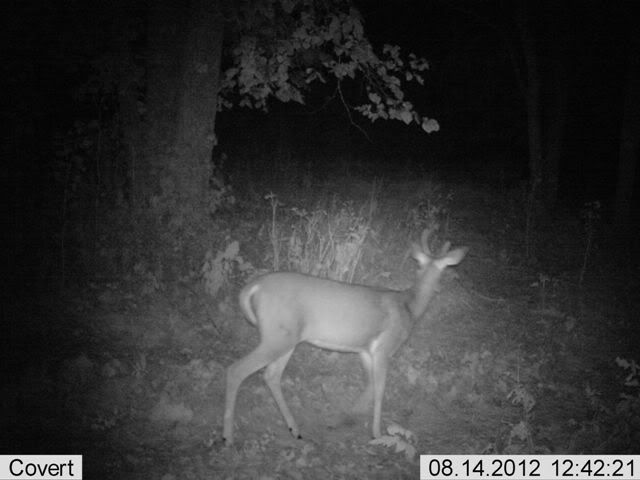
There is a little bit of blurriness on the head of the deer as it wasn't standing perfectly still, but if you look more at the body it comes out with pretty good detail. Again, the trigger time was better that the Covert showed with the first photo above. It may be that this camera has a better night time trigger than day time. I didn't get any other daytime photos in this spot from these cameras so it's hard to tell.
One more Still photo, night (Spypoint)
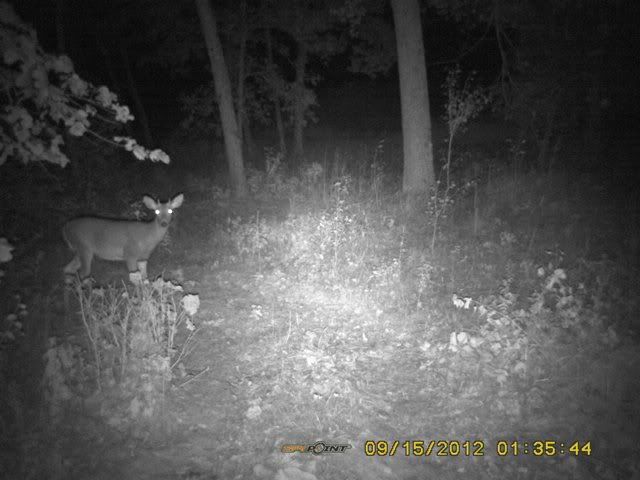
This time the deer is not directly in the center of the IR flash and comes out with very good detail. There is also the possibility that new batteries are causing this problem as I changed the batteries in both cameras after the ones in the Covert initially went dead.
One more still photo, night (Covert)
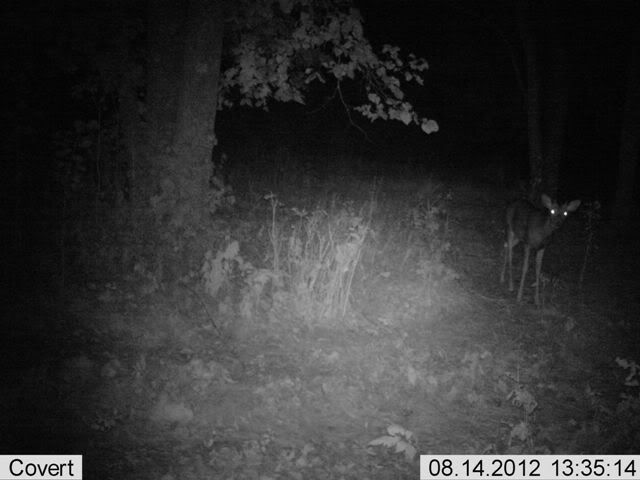
I did this last comparison since in both cases the deer was off to the side of the IR flash. There is definitely better lighting on the sides with the Spypoint than the Covert in this case.
Outcome:
Even though I'm a tad upset (and concerned) that the firmware update gave me too much IR flash on the Spypoint, I'm going to give that camera the win in this matchup. The reasons are these: Even though I prefer color photos to IR, there are too many shadows in the dusk situation and you don't get as much detail with the color photo. Trigger time on the first photo was a tad slow on the Covert. Both cameras generally have similar photo quality. The Spypoint has better IR range on the sides.
Other pros and cons:
Pros:
Spypoint G4:
Uses 8 AA batteries
Awesome battery life
Super easy to set up
Small, Compact size
Mounting strap is easy to use and long enough to fit very large trees
RealTree camo pattern helps conceal it.
Switch inside battery compartment allows you to go from alkaline to rechargeable and get the most out of your batteries depending on which you are using.
Covert CA3.0
Uses AA Batteries
Very tiny camera. Fits in the palm of your hand. Easy to conceal.
Comes with remote with small screen to view pics.
Cons:
Spypoint G4
Pics are a bit "grainy" (seems slightly better after firmware update)
Price has gone waaaay up since I bought mine. (Used to be under $100, now is about $180)
Covert CA3.0
Not a user friendly SD card slot (hard to get to unless you have small fingers)
Remote is nice but the cord is only about 12 inches long and has to be plugged into the camera. Port for remote is difficult to access.
Uses 4AA batteries and does not have the best battery life (although the ads claim otherwise)
Strap is a little more complicated than it needs to be.
Discontinued model (the CA4.0 is now available) New model, like the Spypoint G4, has gone way up in price. The CA3.0 cost me about $70. The CA4.0 is closer to $130.
The Spypoint moves on, even though it's now a higher priced camera. The Covert is actually a decent little unit. Very tiny. It's literally as long and wide as a dollar bill and maybe 1.5 inches thick. Even with the higher price on the new model, $130 is not bad in today's market compared to Moultries, Primos, etc.
The next matchup gives the Primos folks a chance to reclaim the title as the Spypoint G4 goes up against the new Truth Cam 35 Ultra.




